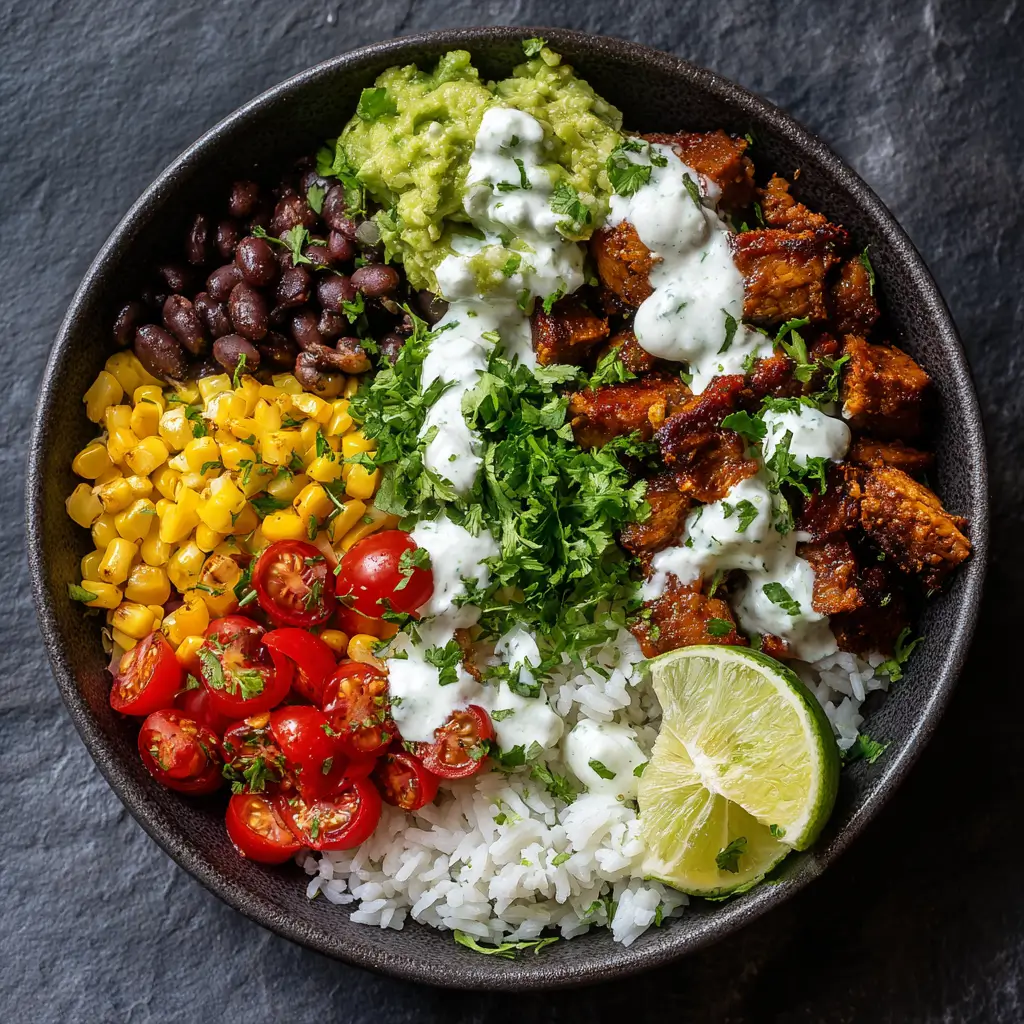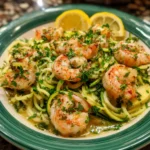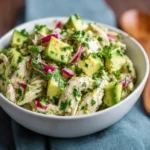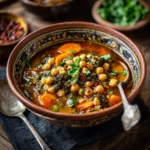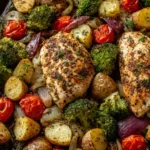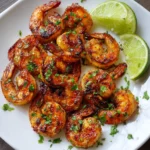Vegan Burrito Bowl: A Flavor-Packed Plant-Based Delight
The Vegan Burrito Bowl has rapidly become a staple in plant-based cuisine, combining bold Mexican flavors with wholesome, nutrient-rich ingredients. Unlike traditional burritos wrapped in tortillas, this deconstructed version presents layers of vibrant components in a bowl, making it not only visually appealing but also customizable to individual tastes and dietary needs. Whether you’re a committed vegan or simply exploring meatless meals, the Vegan Burrito Bowl offers a satisfying, hearty option that’s as nutritious as it is delicious.
The History of the Burrito Bowl
The concept of the burrito bowl evolved from the traditional Mexican burrito, which typically consists of a large flour tortilla stuffed with rice, beans, meat, cheese, and various toppings. As global palates shifted toward healthier, lighter meal options in the late 20th century, food innovators began experimenting with “deconstructed” versions of classic dishes. The burrito bowl emerged as a popular alternative—retaining all the beloved elements of a burrito but served without the tortilla, reducing carbohydrate content and increasing portion flexibility.
In the 2010s, fast-casual restaurant chains like Chipotle helped popularize the burrito bowl format, offering customers the ability to build their own combinations. As veganism gained momentum, so did demand for plant-based bowls. Chefs and home cooks alike began crafting fully vegan versions using legumes, whole grains, and fresh vegetables, giving rise to the modern Vegan Burrito Bowl—a dish rooted in tradition but reimagined for contemporary health-conscious eaters.
Ingredients Breakdown: What Makes It Vegan and Nutritious
A well-crafted Vegan Burrito Bowl balances macronutrients while maximizing flavor and texture. Here’s a detailed breakdown of each component and its role:
- Base (Grains): Typically brown rice, cilantro-lime rice, quinoa, or cauliflower rice. These provide complex carbohydrates and fiber, essential for sustained energy.
- Protein Source: Black beans, pinto beans, lentils, or seasoned tofu/tempeh. Beans are rich in plant-based protein, iron, and fiber, supporting muscle repair and digestive health.
- Vegetables: Diced bell peppers, corn, cherry tomatoes, red onions, avocado, shredded lettuce, or roasted sweet potatoes. These add crunch, color, vitamins (like A, C, K), and antioxidants.
- Flavor Boosters: Salsa, pickled red onions, jalapeños, or grilled zucchini. These enhance taste with acidity, heat, and depth.
- Healthy Fats: Avocado slices, guacamole, or a drizzle of tahini or cashew crema. Fats support nutrient absorption and contribute creaminess.
- Sauces & Dressings: Cashew sour cream, chipotle mayo (vegan), lime-cilantro dressing, or salsa verde. These tie the bowl together with tangy, smoky, or spicy notes.
- Toppings: Fresh cilantro, green onions, nutritional yeast (for a cheesy flavor), crushed tortilla chips, or hemp seeds for added crunch and nutrition.
Every ingredient is plant-derived, free from animal products, and often organic and non-GMO when possible, aligning with ethical and environmental values central to veganism.
Step-by-Step Recipe: How to Make a Vegan Burrito Bowl at Home
Creating a restaurant-quality Vegan Burrito Bowl at home is simple, fun, and highly customizable. Follow these steps for a balanced, flavorful meal.
Ingredients
For the Base:
- 1 cup uncooked brown rice or quinoa (yields about 3 cups cooked)
- 2 cups water or vegetable broth
- 1 tablespoon olive oil
- 1 clove garlic, minced
- 1 lime, juiced
- 2 tablespoons fresh cilantro, chopped
- Salt and pepper to taste
For the Beans:
- 1 can (15 oz) black beans, drained and rinsed
- 1 teaspoon ground cumin
- 1/2 teaspoon smoked paprika
- 1/2 teaspoon chili powder
- 1 clove garlic, minced
- 1/4 teaspoon onion powder
- 1/2 cup salsa or tomato sauce
- Salt and pepper to taste
For the Vegetables & Toppings:
- 1 cup corn kernels (fresh, frozen, or canned)
- 1 bell pepper, diced
- 1 small red onion, finely chopped
- 1 cup cherry tomatoes, halved
- 1 ripe avocado, sliced or mashed into guacamole
- 2 cups shredded romaine or butter lettuce
- 1/4 cup pickled red onions (optional)
- 1 jalapeño, sliced (optional)
- Fresh cilantro, for garnish
For the Sauce:
- 1/2 cup raw cashews (soaked for 4+ hours or boiled for 15 minutes)
- 1/4 cup water
- 2 tablespoons lemon juice or apple cider vinegar
- 1 clove garlic
- 1/2 teaspoon salt
- 1/4 teaspoon onion powder
- Pinch of turmeric (optional, for color)
Directions
- Cook the Grain Base: Rinse the rice or quinoa thoroughly. In a saucepan, heat olive oil over medium heat. Add minced garlic and sauté for 30 seconds until fragrant. Add the grain and toast for 1 minute. Pour in water or vegetable broth, bring to a boil, then reduce heat to low, cover, and simmer for 25–30 minutes (rice) or 15 minutes (quinoa). Once cooked, fluff with a fork and stir in lime juice, chopped cilantro, salt, and pepper. Set aside.
- Prepare the Seasoned Beans: In a small saucepan, combine the black beans, cumin, smoked paprika, chili powder, garlic, onion powder, and salsa. Simmer over medium-low heat for 10–12 minutes, stirring occasionally, until thickened and aromatic. Adjust seasoning with salt and pepper. Remove from heat.
- Make the Cashew Sauce: Drain soaked cashews and add them to a high-speed blender with water, lemon juice, garlic, salt, onion powder, and turmeric. Blend on high for 1–2 minutes until completely smooth and creamy. Add more water if needed for desired consistency. Taste and adjust seasoning.
- Prepare the Vegetables: While grains and beans cook, chop all vegetables. You can serve them raw for crunch or lightly sauté/slice depending on preference. For warm corn and peppers, heat a skillet with a splash of oil and sauté for 3–5 minutes. Guacamole can be made by mashing avocado with lime juice, salt, and diced onion/tomato.
- Assemble the Bowls: Begin with a generous scoop of cilantro-lime rice or quinoa as the base. Layer on seasoned black beans, corn, bell peppers, tomatoes, onions, lettuce, and avocado. Drizzle generously with cashew crema or your favorite vegan sauce. Top with pickled onions, jalapeños, fresh cilantro, and a sprinkle of nutritional yeast or crushed tortilla chips for extra texture.
- Serve Immediately: Enjoy while fresh and vibrant. Pair with an extra lime wedge for squeezing over the top just before eating.
Pro Tips for the Perfect Vegan Burrito Bowl
- Batch Cook Grains and Beans: Save time during the week by cooking a large batch of rice and seasoned beans on Sunday. Store in airtight containers in the fridge for up to 5 days.
- Soak Cashews Ahead: Soak cashews overnight or use the quick-boil method (boil for 15 minutes) for ultra-smooth sauces without a high-powered blender.
- Add Acid for Brightness: A squeeze of lime or lemon juice just before serving lifts all the flavors and prevents the bowl from tasting flat.
- Texture Matters: Combine creamy (avocado, sauce), crunchy (lettuce, onions, chips), and soft (beans, rice) elements for a satisfying mouthfeel.
- Warm Your Bowl: Microwave the serving bowl for 30 seconds before assembling to keep ingredients warm longer.
- Layer Smartly: Place heavier, warmer ingredients at the bottom and delicate greens/avocado on top to prevent wilting.
Variations and Customizations
The beauty of the Vegan Burrito Bowl lies in its versatility. Here are some creative twists to keep your meals exciting:
- Mexican Street Corn Bowl: Replace plain corn with elote-style corn (tossed with vegan mayo, chili powder, lime, and cilantro).
- Tex-Mex Taco Bowl: Use taco-spiced lentils or crumbled tempeh instead of beans, and add shredded cabbage and pico de gallo.
- Southwest Quinoa Bowl: Mix quinoa with roasted sweet potatoes, black beans, corn, and a chipotle-tahini dressing.
- Mediterranean Twist: Swap Mexican spices for cumin, oregano, and lemon; use chickpeas, cucumber, olives, and tzatziki-style cashew sauce.
- Breakfast Burrito Bowl: Include scrambled tofu with turmeric, black salt (kala namak), sautéed peppers, and potatoes. Top with salsa and avocado.
- Low-Carb/Keto Option: Use cauliflower rice as the base and increase healthy fats with extra avocado and seed toppings.
- Kid-Friendly Version: Skip spicy elements, add mild salsa, and include sweet corn and shredded cheese substitute.
Health Considerations and Nutritional Value
A typical Vegan Burrito Bowl is a powerhouse of nutrition when built thoughtfully. Here’s why it’s considered a healthy choice:
- High in Fiber: Beans, whole grains, and vegetables promote digestive health and help regulate blood sugar levels.
- Rich in Plant Protein: Combining beans and grains provides complete amino acids, supporting muscle maintenance and satiety.
- Heart-Healthy Fats: Avocado and nuts/seeds contain monounsaturated fats that support cardiovascular wellness.
- Packed with Vitamins & Minerals: Bell peppers (vitamin C), spinach (iron), tomatoes (lycopene), and sweet potatoes (vitamin A) boost immune and cellular function.
- Low in Saturated Fat and Cholesterol-Free: Naturally supports heart health and reduces risk of chronic disease.
- Antioxidant-Rich: Colorful vegetables and herbs combat oxidative stress and inflammation.
Nutritional Estimate (per average serving):
- Calories: 500–650
- Protein: 18–22g
- Carbohydrates: 70–85g (mostly complex)
- Fiber: 15–20g
- Fat: 15–20g (mostly unsaturated)
- Sodium: Varies (reduce by using low-sodium beans and limiting added salt)
Note: Nutrient content depends on specific ingredients and portion sizes. Those managing diabetes, kidney disease, or calorie intake should customize accordingly.
Frequently Asked Questions (FAQ)
Can I make a Vegan Burrito Bowl ahead of time?
Yes! Prep components separately and store them in airtight containers in the fridge for up to 4–5 days. Assemble bowls fresh to maintain texture, especially greens and avocado.
Is this bowl gluten-free?
Yes, as long as all ingredients used are certified gluten-free. Rice, beans, vegetables, and most spices are naturally gluten-free, but check labels on sauces and broths.
How do I store leftovers?
Store components separately: grains and beans in one container, vegetables in another, sauces in small jars. Reheat grains and beans gently; add cold toppings fresh.
What can I use instead of cashews for the sauce?
Try silken tofu, sunflower seeds, tahini, or blended white beans for a nut-free alternative. Each will yield a slightly different flavor and texture.
Can I freeze this meal?
Grains and beans freeze well for up to 3 months. Sauces with cashews may separate upon thawing, so it’s best to make them fresh. Avoid freezing avocado or lettuce.
Is this bowl suitable for weight loss?
Absolutely. Focus on portion control, increase fiber-rich veggies, choose lower-calorie bases like cauliflower rice, and moderate high-fat toppings like avocado and sauces.
Can I use canned beans?
Yes, canned beans are convenient and perfectly safe. Just rinse them thoroughly to reduce sodium and improve digestibility.
Summary
The Vegan Burrito Bowl is a vibrant, nutrient-dense meal that celebrates the diversity and flavor of plant-based eating. Packed with whole grains, legumes, fresh produce, and creamy sauces, it’s a satisfying dish that’s as healthy as it is customizable.
